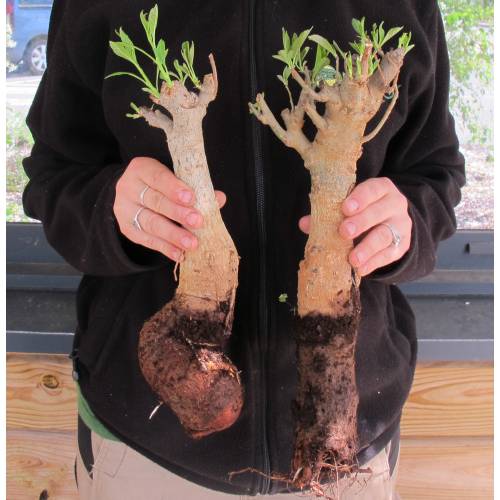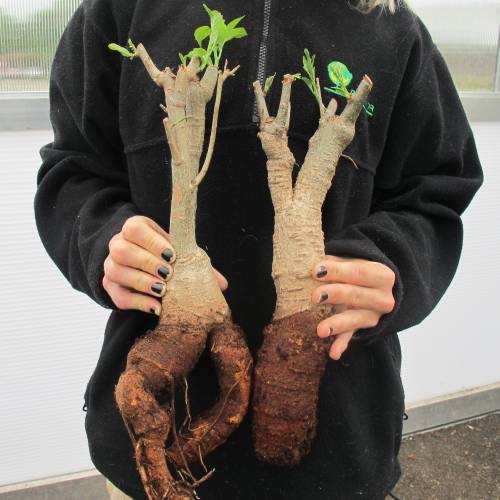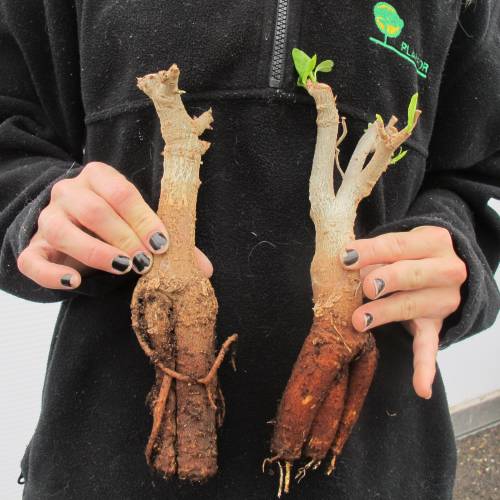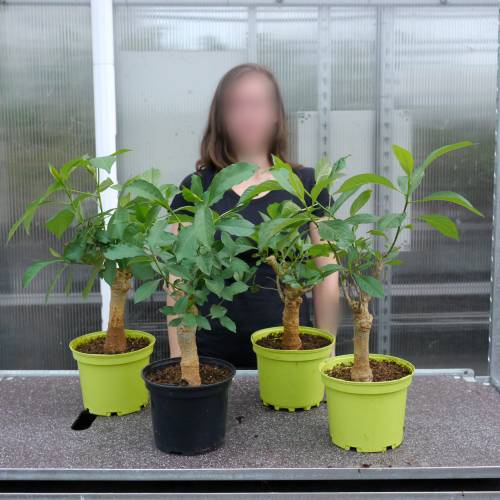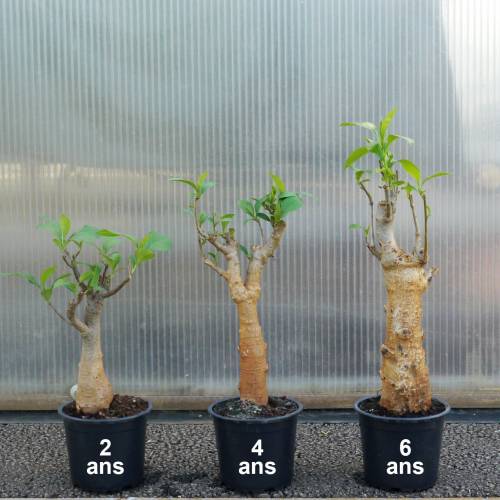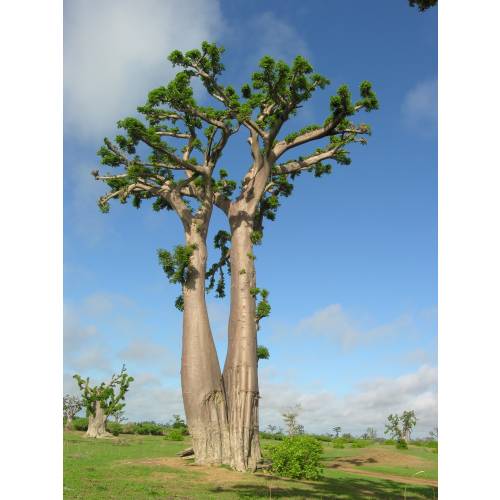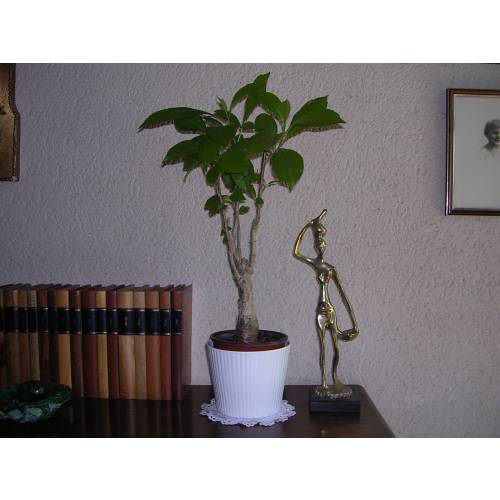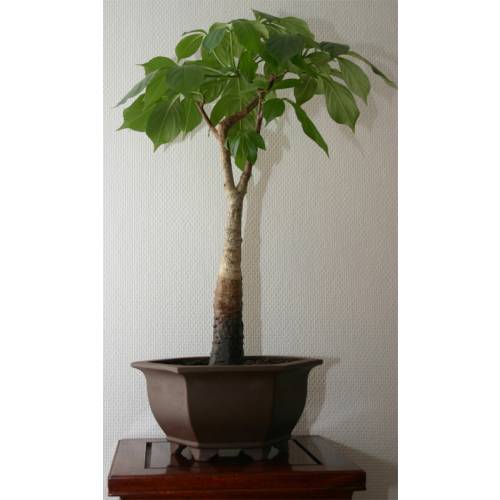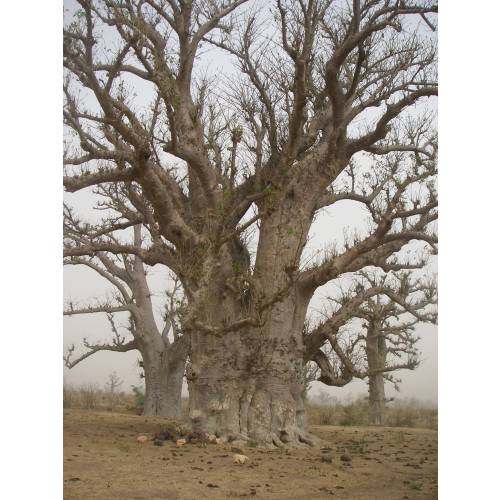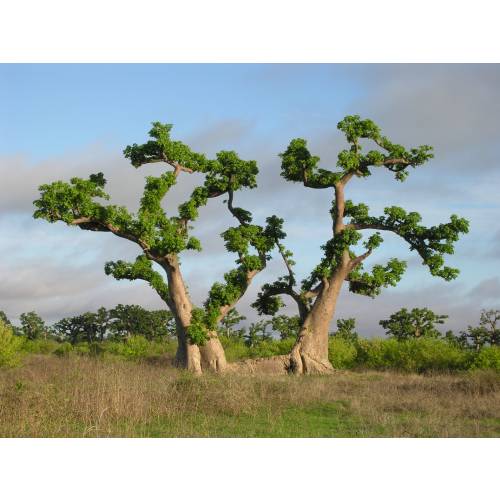
Pleioblastus bamboos
Baobab / Adansonia digitata
-
49.95 € Baobab - Adansonia digitata
8902R - Spring 2026
-
39.95 € Baobab - Adansonia digitata
8902Q - Spring 2026
-
38.50 € Baobab - Adansonia digitata
8902F - Spring 2026
-
34.65 € Baobab - Adansonia digitata
8902K - Spring 2026
-
33.75 € Baobab - Adansonia digitata
8902P - Spring 2026
-
24.65 € Baobab - Adansonia digitata
8902N - Spring 2026
-
4.55 € Baobab - Adansonia digitata
8902G - Available
-
0.40 € FERTILISER
8902A - Available
-
Areas of origin: Africa, from the Sahel to the Transvaal, in the dry savannah regions.
Adult Dimensions: Up to 24 metres high (79'), diameter of the trunk can grow to 8 or 9 metres (26 or 29.5').
Foliage: Deciduous in the dry season. In Europe, deciduous in Autumn/Winter.
Flowering: At the end of the dry season or just before the first rains often before the first leaves.
Soil type: Weak acid to lime, dry.
Hardiness: Temperatures above 12°C.
Exposure: Full sun.
b>Keeping a Baobab Tree inside: Put in a warm environment (minimum temperature 12°C) and well lit near a window. In some areas it will be possible to put outside from June throughout to September.
Water thoroughly when the compost is dry. Can wait for another month before being watered again. Continue watering even if the tree loses its leaves in winter.
You can treat your Baobab Tree like a house plant and transplant later into bigger containers, or pots with a water reserve.
b>The baobab should be re-potted every 2 years: - Trim roots by a third.
- Choose a terracotta pot with a hole, one size bigger than the root ball.
- Fill with a mix of compost (70%) and sand (30%).
- Re-pot and water well.
Characteristics and Uses:
The baobab is one of the most useful trees grown in the Sahel. It is revered and protected by the population. A source of shade and landmark in the countryside, the Baobab is treated as a meeting point for markets and other events.
The leaves are rich in calcium, iron, proteins and lipids, constituting an additional source of nutrition.
The fruit is commonly known as monkey bread. The pulp is used for making refreshing drinks rich in Vitamins B1 and C.
Young shoots and roots are eaten like asparagus.
The black seeds contained in the pulp can be grilled and eaten. They contain more protein than peanuts and have a higher percentage of Lysine (amino acids necessary for growth) than in vegetables.
At the time of the sap rising, the bark fibres are taken off up to 1.5m (4.9') in length and on the entire circumference of the trunk to make ropes.
The wood being very soft and spongy is not used. It has high water content, up to 10,000 litres in large trees. In drought periods, humans and animals will chew the wood to appease their thirst.
The old trees often have natural or man-made cavities that act as water reservoirs, or food and cereals stocks. They can also act as refuges or burial sites. The baobab has a very high resistance to fire and drought.
b>It has very few enemies: - Young trees are usually only destroyed by fire or animals,
- the biggest ones can be damaged by elephants who break the branches,
- the oldest ones are either destroyed by storms, lightning or just collapse.


